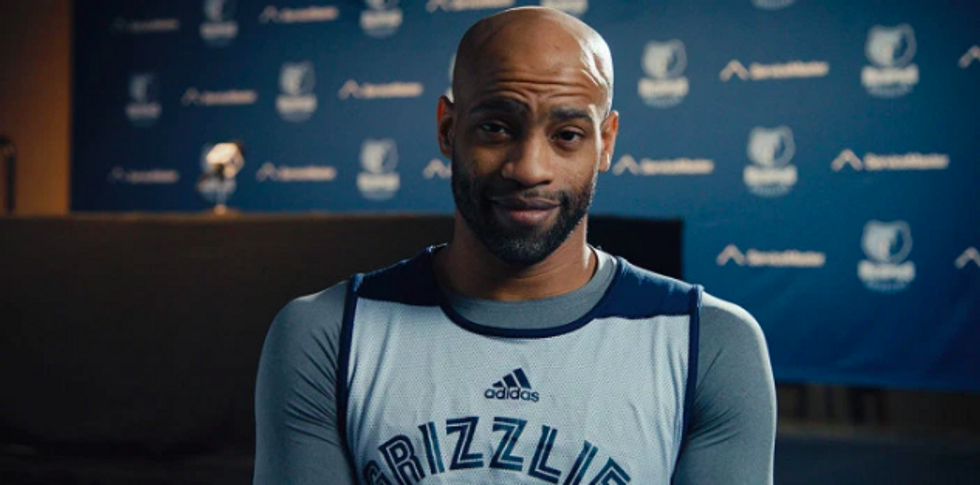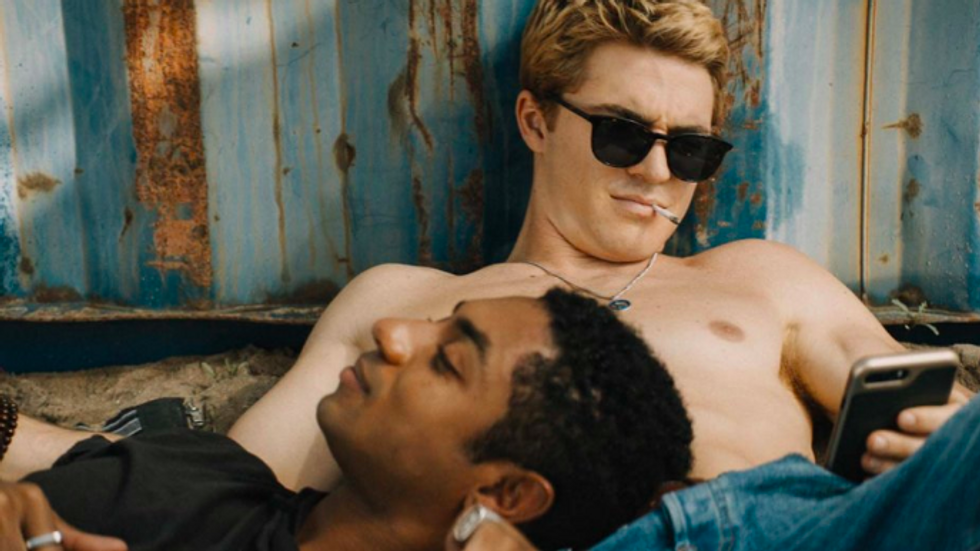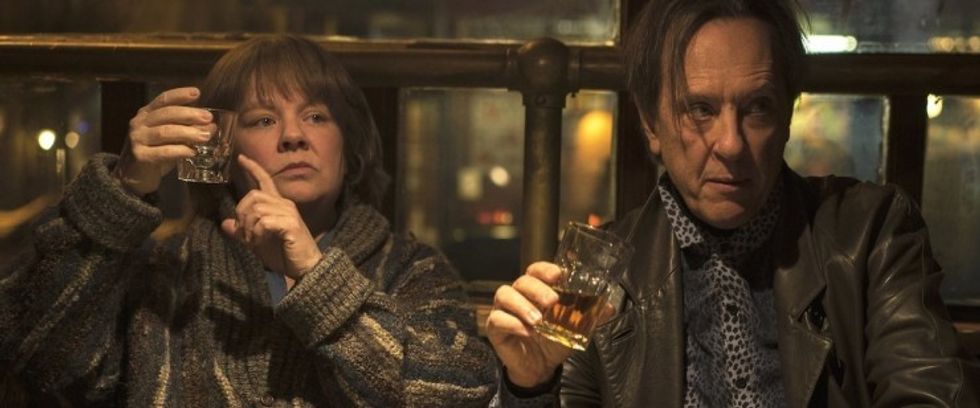6 Things Producers Look for When You Pitch
Want to sell your idea to a studio or exec?

You have great ideas. You’re a stone’s throw away from your big break. Your script is written, your deck is complete. You’re ready to pitch.
So how do you sell your idea to a production exec? How do you not screw it up? Four major industry executives sat down at TIFF ’19 to share their advice on “Maximizing Your Intellectual Property.”
“The coolest shit happens at the margins. We want to explore cultural trends that are intersectional across race, class, geography.”
Moderating the panel was Anne Carey of Archer Gray, the award-winning producer behind Diary of a Teenage Girl (2015), 20th Century Women (2016), and Can You Ever Forgive Me? (2018). Joining her onstage were three power players with a boatload of experience across multiple formats, plus a hunger for fresh new content.
Panelists included:
- Sanjay Sharma, Founder and CEO/Producer of Marginal Media (a subsidiary of Imagine Entertainment) and co-founder of Machinima before selling it to Warner Bros. Sharma’s Marginal just debuted their first feature at TIFF ’19, The Obituary of Tunde Johnson: a polished, crowd-pleasing Groundhog Day-Style account of police brutality, starring Steven Silver (13 Reasons Why).
- Margaret Boykin, a producer at Ubisoft’s burgeoning film and TV department, where she adapts popular video games into TV and Film. Stay tuned for her TV adaptation of acclaimed video game “Child of Light.”
- Aron Philips, Head of Development at Uninterrupted, an all-digital sports programming network that recently premiered two movies at TIFF: The Carter Effect (2017), and The American Dream (2018).
The panel and conversation lasted an hour, and NFS gathered six key criteria that all four of them look for when judging a pitch.

1. Ask Yourself, “Why You, Why Now?”
Pitching is a lot like dating: It’s as much about how you present yourself as it is how you communicate your idea. You can be sure you’re not the first or the last person they’ll meet, so what can make you stand out? Why should a producer put a ring on your project?
“We’re looking for fringe culture,” Sharma explained. “The coolest shit happens at the margins. We want to explore cultural trends that are intersectional across race, class, geography.”
"Storytellers with a point of view, passion, patience, perseverance."
But as he also pointed out, the person behind the idea is just as important. “We look for filmmakers who are as interested in developing a podcast or a graphic novel as they’re interested in developing a television show. Storytellers with a point of view, passion, patience, perseverance.” He laughed, shook his head. “I didn’t mean to have so much alliteration. The four P’s. Eat your p’s.”
Philips added: “You’re competing with hundreds of original series. So you have to create something that is so arresting, so alarming, that people will leave their house and spend money to view it with others.”
Philips sighed at the thought of today’s glutted market: “The days of filling endless program blocks are over. To cut through, your project needs to be something that gets people talking. Two questions that I ask in every pitch are, ‘Why you, and why now?’ Meaning: ‘Is this the best version of the story, is this necessary, is this adding value to the conversation?’”
For Boykin at Ubisoft, part of this “added value" means adding women to the conversation. “In the IP-driven space, it can be really male-dominated. So we’re trying to create more opportunities for women. Female creators should look into our six-month Women’s Film and Television Fellowship.” (Link with more info here and here).
Carey concurred: “Things really have to pop in some way. Whatever your topic, it has to be seen through an original lens.”

2. Understand The Difficulty
Essentially, all four of these seasoned producers have the same goal: they’re looking for fresh voices, and they’re willing to consider yours … during the brief moments that they decide to give you. But you have to check off the right attitude boxes.
Having a good idea is only the first step of many, Carey admits. “Know what you’re getting into.” No matter how good your idea is, producers want you to know that they won’t babysit you through the process. You need to treat yourself like a professional, and work like a major filmmaker—even when you’re the only one who cares about your story.
No matter how good your idea is, producers want you to know that they won’t babysit you through the process
“I know how hard it’s gonna be,” Carey stated matter-of-factly. “When someone comes into my office for a meeting, I always ask myself, ‘Does the other person know how hard it’s gonna be? Are they die-hard too?’”
Sharma chimed in, concurring: “It’s a tough business, even for established filmmakers. We want to work with creators who understand that it’s not going be easy.”
Philips nodded, then clarified. “It’s a partnership. But if you’re not putting in the time upfront, not taking yourself seriously … it’s really hard for us to invest our own time or energy.”

#3: Take Risks
In order to add value, to push the boundaries of traditional entertainment into new territory, taking risks is a given. Sharma’s new feature, The Obituary of Tunde Johnson, required going out on a limb. The script was penned by an unknown: 19-year-old USC student-turned-screenwriter Stanley Kalu.
It certainly helped that Kalu’s script won the collegiate LAUNCH Million-Dollar Screenplay competition—but what really sold Sharma was the story’s premise. It was a time-loop genre for Young Adults … from the perspective of a gay black teen.
Fringe culture indeed.
Sharma smiled, proud of Marginal’s inaugural film: a deft mix of entertainment and social awareness. “People pass on projects, that’s the nature of the business,” he shrugged. “But don’t let that shake you. You just need to find the one person who believes in your project—and for them, it will be worth the risk.”
"You just need to find the one person who believes in your project—and for them, it will be worth the risk.”
Sharma’s next project is an animated kids’ show starring Quavo of Migos Fame. As far as he’s concerned, it’s not risky: it’s the logical next step.
The way these panelists see it, if a producer is going to embrace you and your project, you’d better believe in it wholeheartedly—even when your pitch doesn’t go exactly as planned. Listen to their reactions, give them thoughtful answers. And let your own passion show: be articulate about why you care. Producers are looking for cues about your level of confidence. Vision.
“Every project is a risk,” Boykin laughed through a sigh. “You have to really believe in it, just to keep it alive. If people pass on you, you need to know that they’re wrong, because you can see the finish line. You just have to keep going.”
Carey nodded ruefully, adding, “I’ve made movies that 75 people have passed on. At some point you have to just think— ‘Everyone’s wrong!’ And believe in yourself.”

#4: Retrain Your Brain
Believe in yourself? This may sound like a given, but it’s easier said than done. Which begged Carey’s next question: How do you know when a new voice is ready for this kind of commitment?
According to Sharma, producers try to gauge ability based on prior work. “Commercials, shorts, great written material; anything visual that supports their vision. We’re interested in creators who have had success in one format. Because the industry pigeonholes you, it’s harder and harder to make a first feature. We’re interested in being the tip of the spear for new voices.”
Even if you haven’t made commercials or shorts, you probably have some other strong angle for selling yourself. Sharma followed his criteria by encouraging open-mindedness: “If you grew up in the film school system, the path was festival circuit, indie film, bigger and bigger projects. Now we have to retrain our brains to think across multiple platforms. And I think that’s a good thing. It’s more expansive.”
Today’s multitude of storytelling formats may be intimidating, but it’s actually a plus. You’re no longer catering precisely to the needs of a studio; now it’s about collaborating with your team of risk-takers, seeking the ideal format for your particular project. The good news is, there’s more creative freedom now than there used to be—and as Sharma and his colleagues suggest, you have to follow your gut: “Ask yourself what is best for your story.”

Even though Carey’s primary focus is feature film, she clearly agrees that the landscape had changed. “Things that I thought were going to be features are now TV. And vice-versa. I’m dying to do a 10-minute TV show.” She flashed a grin. “I think that would just be a fun form to figure out. It is so elastic right now, it’s really exciting.” Her fellow panelists nodded, sharing her enthusiasm.
Carey went on, musing: “I tend to think: beginning, middle, and end. I like to know how a story concludes. But I find myself having to shake myself out and loosen up about those structures. That’s exciting. But it does take away the traditional sense of how things fit.” She paused in careful consideration, then leveled her gaze at the audience. “What kind of stories do you like to watch? Maybe that’s what you should lean into. If you never leave your house to go to the movies, maybe a 90-minute movie isn’t what you need to make.”
Carey laughed at her own frankness—and Sharma laughed back.
“What’s the last movie you saw in a theater?” he asked, teasing, then added, “The costs of a wide theatrical release can be staggering, especially in marketing.” He, too, looked out at the audience, cautioning over-eager first-timers. “You may want your little movie made for 5 million dollars to be seen in theaters. But the odds are stacked against it. If your film opens to 6 million bucks, you go straight to director’s jail.”
Aron Philips, on the same page as Sharma, jumped in: “Or, if you release on Netflix, you can you say from the get-go that you’re already in front of 3 million people!”

#5: Be A Collaborator
In sum, all these producers value the new flexibility—and look for storytellers who are open to change. Boykin emphasized the importance of creative flexibility. “There’s no one kind of person we’re looking for,” she insisted. “In terms of writers, we often find the right candidate by seeing how they evolve their pitch from meeting to meeting.”
“In terms of writers, we often find the right candidate by seeing how they evolve their pitch from meeting to meeting.”
This is a producer’s most humble and pointed request: be malleable.
“We want someone who’s going to be a very collaborative team player.” Boykin cited The Divison, Ubisoft’s Jake Gyllenhaal and Jessica Chastain sci-fi-actioner that was just picked up by Netflix. “The writer of The Division responded really well to our notes. He pushed his characters further and deeper in a new draft after meeting with all of our producers.”
Boykin makes a good point—but don’t panic. These producers don’t want to quash your creative instincts. They’re here to help, and in fact, they want you to defend your vision.
Carey was careful to underscore this. “There’s a difference from being nimble and wishy-washy. You need to have the attitude that ‘I’m gonna get it done and I’ll figure out the right way to do it.’ It’s important that you walk in with a very clear central vision—and then, that you have the ability to negotiate and collaborate with input.”
In other words, pick your battles.
Boykin picked up where Carey left off. “The best writer/directors are real leaders and communicators, they don’t just defer to producers. You have to ask yourself why you made a particular creative choice, then use that to guide your next steps. We want a distinct point of view and motivation behind the story you’re telling, as well as openness to input from us. If you give us those two things, we can workshop your project and get it to a place where everyone’s happy.”
In many ways, it boils down to attitude. “People don’t want to work with assholes,” Sharma declared. “The culture of the business is actually changing in a positive direction: you want to work with people whom you enjoy spending time with—so you choose your team with as much care as you choose your story.”

#6: Be Willing To Fail
Their final piece of advice? As is true with all risk-taking, you have to be willing to fail. It’s all part of the same message: Understand the difficulty. Take risks. Retrain your brain. Be a collaborator… And no matter what, swing for the fences, even when failure is breathing down your neck.
“Failure can actually make a collaboration stronger”
Carey summed it up deftly, “Failure can actually make a collaboration stronger,” she asserted. “You learn who you’re in the boat with when the boat is sinking. I’ve had instances when a project hasn’t made it to shore, but the relationship that was strengthened during the pain of that process has led to something else. Something better.” She paused, considering her next words carefully. “I have seen filmmakers really crash and burn on bad attitude. It’s a relationship business, and it’s not a big world. I do think the key to success is a positive, committed, collaborative attitude wrapped around a great idea with a clear point of view. I think that’s what everyone looks for in new voices.”











